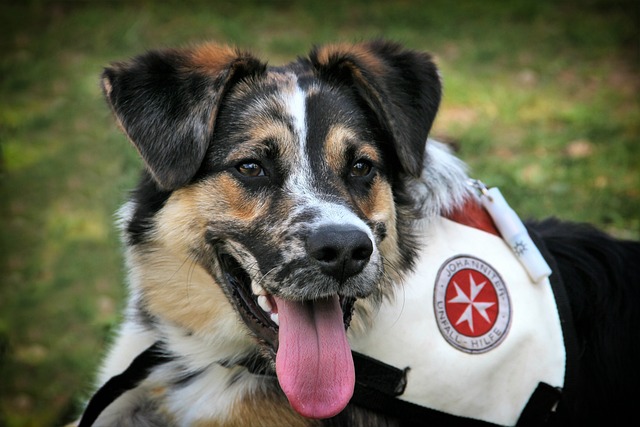Welcoming a rescue dog into your life can be incredibly rewarding. Not only are you providing a loving home to an animal in need, but you also have the opportunity to transform their life through training to become a service animal. In this comprehensive guide, we’ll explore the steps involved in training a rescue dog to fulfill the vital role of a service animal, offering companionship and assistance to those in need.
Defining the Purpose

Rescue dogs, often coming from shelters or challenging backgrounds, possess incredible potential to become service animals. By undergoing specialized training, these dogs can offer support to individuals with disabilities, providing assistance with daily tasks and emotional support.
Importance of Training
Training a rescue dog to become a service animal not only benefits the individual they will assist but also enriches the life of the dog itself. It provides mental stimulation, a sense of purpose, and strengthens the bond between the dog and their handler.
Types and Categories
Service Animal Classifications
Service animals can serve various purposes, including guide dogs for the visually impaired, hearing dogs for the deaf, mobility assistance dogs, psychiatric service dogs, and more. Each category requires specific training tailored to the needs of the individual.
Emotional Support Animals (ESAs)

While not classified as service animals under the ADA, emotional support animals provide vital companionship and comfort to individuals with emotional or psychological disabilities. Training focuses on providing emotional support and assistance during times of distress.
Symptoms and Signs
Identifying Potential
Rescue dogs with the right temperament, intelligence, and willingness to learn are prime candidates for service animal training. Signs of suitability include adaptability, calm demeanor, and a strong bond with humans.
Behavioral Challenges
Some rescue dogs may exhibit behavioral issues stemming from past trauma or neglect. These can include anxiety, fearfulness, or reactivity. Understanding and addressing these challenges is crucial during the training process.
Causes and Risk Factors
Background and History
Rescue dogs often come from varied backgrounds, including abandonment, abuse, or neglect. These experiences can shape their behavior and may require patience and understanding during training.
Environmental Factors
The environment in which a rescue dog is raised and trained plays a significant role in their development. Positive reinforcement, socialization, and exposure to different stimuli are essential for their growth and confidence-building.
Diagnosis and Tests
Initial Assessment
Before embarking on service animal training, a rescue dog undergoes a thorough assessment to evaluate their temperament, health, and suitability for the role. This may include veterinary checks, behavioral evaluations, and temperament tests.
Training Progress Evaluation
Throughout the training process, regular assessments monitor the dog’s progress and identify areas for improvement. Adjustments to training methods and techniques may be made based on these evaluations.
Treatment Options
Positive Reinforcement Training
Positive reinforcement techniques, such as clicker training and reward-based methods, form the foundation of service animal training. These methods focus on rewarding desired behaviors, fostering a positive learning experience for the dog.
Task-Specific Training
Training sessions are tailored to the specific tasks the service dog will perform, whether it’s guiding the visually impaired, alerting to sounds, retrieving items, or providing emotional support. Consistency and repetition are key to mastering these tasks.
Preventive Measures
Early Socialization
Early socialization plays a crucial role in shaping a rescue dog’s behavior and temperament. Exposure to various environments, people, and animals from a young age helps build confidence and adaptability.
Ongoing Training and Support
Training doesn’t end once a rescue dog becomes a certified service animal. Ongoing reinforcement and continued learning ensure that the dog remains proficient in their duties and maintains a strong bond with their handler.
Personal Stories or Case Studies
Success Stories
Real-life examples highlight the transformative impact of training rescue dogs as service animals. Stories of partnership, independence, and companionship inspire others to consider the potential of rescue dogs.
Case Studies in Training
Exploring specific case studies provides insights into the training process, including challenges faced, breakthrough moments, and the ultimate success of the partnership between a service dog and their handler.
Expert Insights
Veterinarian Perspectives
Veterinarians specializing in behavior and training offer valuable insights into the unique considerations involved in training rescue dogs as service animals. Their expertise guides handlers in providing the best care and support for their canine companions.
Certified Trainers
Experienced trainers share their knowledge and expertise in working with rescue dogs, offering practical tips, training techniques, and advice for overcoming obstacles encountered during the training process.
Training a rescue dog to become a service animal is a journey filled with challenges, rewards, and profound transformations. By understanding the process, addressing potential obstacles, and embracing the partnership between dog and handler, individuals can unlock the full potential of rescue dogs to make a meaningful difference in the lives of those in need.
read also:
– Best hypoallergenic dog breeds for families with allergies
–After 15 Years Of Friendship This Unlikely Animal Trio Said Goodbye To One Of Their Brothers
Advanced Training Techniques

Targeting Specific Tasks
Advanced training focuses on refining the service dog’s skills to perform specific tasks tailored to the individual needs of their handler. This may include navigating complex environments, responding to unique cues, or providing specialized assistance.
Distraction Training
Service dogs encounter various distractions in their daily lives, from crowded public spaces to noisy environments. Advanced training teaches dogs to maintain focus and perform tasks reliably, even in challenging circumstances.
Real-Life Testimonials
Transformative Partnerships
Real-life testimonials highlight the profound impact of service dogs on the lives of their handlers. From providing independence and mobility to offering emotional support and companionship, these stories showcase the power of the human-canine bond.
Overcoming Challenges
Testimonials also shed light on the challenges encountered during the training process and how perseverance, patience, and dedication ultimately lead to success. Handlers share their journey of growth alongside their service dogs, celebrating milestones and triumphs together.
Expert Insights
Behavioral Specialists
Behavioral specialists offer insights into addressing behavioral challenges that may arise during advanced training. They provide guidance on managing anxiety, fearfulness, or reactivity, ensuring that service dogs remain confident and capable in any situation.
Continuous Learning
Experts emphasize the importance of ongoing education and training for both handlers and service dogs. Continuing education programs, workshops, and seminars offer opportunities to refine skills, stay updated on best practices, and strengthen the bond between dog and handler.
Training a rescue dog to become a service animal is a multifaceted journey that requires dedication, patience, and a deep understanding of canine behavior. By embracing advanced training techniques, drawing inspiration from real-life testimonials, and seeking expert guidance, handlers can optimize the partnership with their service dogs and empower them to make a lasting difference in the lives of others.
In conclusion training a rescue dog to become a service animal can be a challenging but rewarding process. By selecting the right dog working with a professional trainer and teaching specific tasks a rescue dog can provide invaluable assistance to people with disabilities. It is essential to remember that service animal training is a specialized process that requires expert knowledge patience and time. With the right training rescue dogs can become loving and capable service animals.

Discover a world of inspiration and creativity with facex. From art and design to technology and lifestyle, our platform features diverse content to empower and uplift. Join our community and explore a new perspective today









Add comment